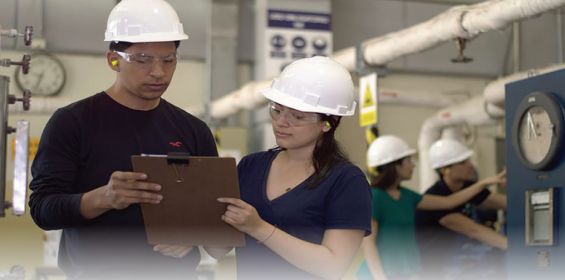When operators invest in new plant and equipment there can be a tendency to focus on the compressor itself, without considering the complete compressed air system and its impact on energy consumption. However, it is important to consider all areas of the air supply – not only the point of generation, but downstream and air treatment equipment, pipework and storage.
Focusing on just one area of the system at the expense of others, will mean that other opportunities to save energy could be missed, leading to unnecessary energy usage.
Designing an energy-saving system
With air compression accounting for as much as 10% of all the electricity consumed by industry, the air compressor could be one of the largest energy-consuming systems in the plant. But it’s also important to consider that the usage and design of the system will dictate its overall energy consumption.
Poor system design, incorrectly dimensioned distribution piping and air treatment (purification) equipment can lead to avoidable pressure loss, so it’s important to factor these areas into the overall system design.
Effective maintenance also has a key part to play in overall system efficiency. For example, just one 2mm hole in the pipework, could cost over £1249 per year in wasted energy, so implementing a regime for regularly inspecting, and remedying can help lower operating costs.
A high leak rate can also cause fluctuations in pressure, resulting in hidden costs such as slower running or even production downtime, not to mention a noisy environment for staff.
Regularly maintaining any ancillary equipment including dryers, filters, and air receivers is also important, alongside checking inlet filters routinely, and replacing where required, before the pressure drop across them becomes significant.
Calculating the system’s annual cost Before embarking on any compressed air system upgrade to help maximise energy savings, it is important to calculate the system’s total yearly cost.
Option 1
To calculate the electrical consumption of the compressor, operators will need to obtain the reading by sub-metering the compressor house. This will be in kilowatt hours (kWh)
Option 2 A data logging system will also help to determine the yearly cost of the compressor system. This needs to be installed for a period of at least seven days.
With this system in place, the pattern of demand can be established, otherwise known as a demand profile, and the off-load running time when there is no demand for air. This does not account for the ‘off-load’ power consumption when the compressor is consuming energy without generating air.
Option 3 And finally, option three allows plant engineers to calculate the annual cost of the system by estimating the energy consumption of each air compressor.
The following working example provides a useful guide: a 75kW compressor operates at 7 bar. It is on load for 80 per cent of the production time, which is 2,000 hours per year. Energy consumption of the compressor = 75 x 0.8 x 2,000 = 120,000 kWh/year. If electricity costs £0.1249/kWh, the annual energy cost is £14,988. Should production time increase to 6000 hours per year, for example, then the annual energy cost would rise to £44,964.
With a range of options available to monitor the annual cost of the air compressor system, it is also important to ensure that alternatives are compared based on ‘whole life’ cost, not just the initial capital outlay. By opting for equipment that is a higher cost but is more efficient, sites could benefit from both lower running costs and total cost of ownership in the long term.
For more information, please visit: www.bcas.org.uk
https://www.linkedin.com/company/british-compressed-air-society/

